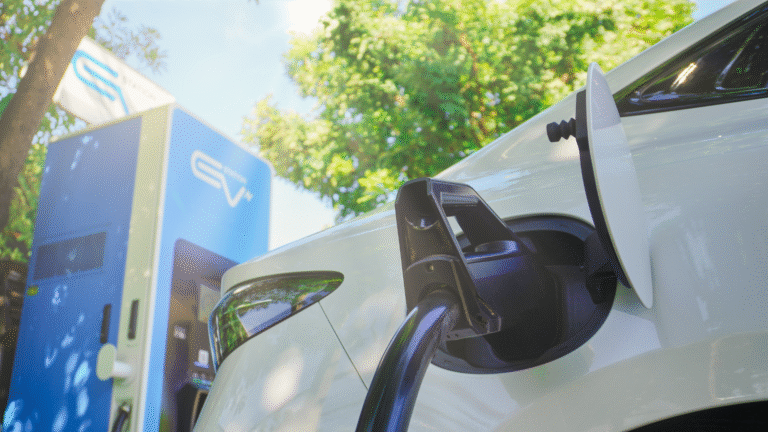Australia’s road to electrification is accelerating, and EV subsidies and incentives are at the heart of this transformation. As governments across the country double down on their climate targets, incentives are becoming crucial in making electric vehicles more accessible to everyday Australians. Whether you’re a prospective EV buyer or already own one, understanding the evolving landscape of EV subsidies in Australia is key to making informed decisions.
Table of Contents
- Federal vs State Incentives: Where We Stand
- Recent Changes in EV Incentive Programs
- Future Directions for EV Policies in Australia
- Comparing Australia’s EV Incentives to Global Leaders
- How EV Buyers Can Prepare
- FAQs
- Conclusion
- Meta Description
Federal vs State Incentives: Where We Stand
Australia lacks a unified national subsidy scheme for EVs, but individual states and territories have rolled out their own programs to encourage EV adoption.
State-Level Highlights (2024–2025):
- NSW: $3,000 rebate for EVs under $68,750 (ending Jan 2024), stamp duty waivers.
- Victoria: Ended the $3,000 subsidy in 2023; focusing on infrastructure investments.
- Queensland: Offers a $6,000 rebate for EVs under $68,000.
- ACT: Up to two years of free registration and interest-free loans up to $15,000.
- South Australia: Ended its EV subsidy in 2024 but continues to support infrastructure rollouts.
While some states are winding back direct rebates, they’re shifting toward broader infrastructure and long-term policy support.
Recent Changes in EV Incentive Programs
What’s Being Phased Out:
- Flat-rate purchase rebates are being scaled down or removed in several states.
- Vehicle luxury thresholds are tightening, with fewer high-end EVs qualifying.
What’s Being Introduced:
- Charging incentives: Rebates or support for home and public EV chargers.
- Income-targeted subsidies: Ensuring lower-income households benefit most.
- Fleet electrification support: Programs to help businesses convert to EV fleets.
These changes suggest a transition from short-term buying incentives to long-term support for EV ecosystem development.
Future Directions for EV Policies in Australia
Fuel Efficiency Standards
Australia’s New Vehicle Efficiency Standard (NVES), set to be introduced in 2025, will pressure automakers to offer cleaner vehicles. This policy mirrors strategies from Europe and the U.S. and is expected to:
- Increase the supply of affordable EVs.
- Penalize high-emission vehicle imports.
- Support long-term EV affordability.
Incentive Shifts Toward Charging Infrastructure
The federal government and multiple states are co-investing in:
- Fast-charging corridors across major highways.
- Urban EV charger grants for apartments and strata buildings.
- Incentives for business and council charger installations.
Income-Based Subsidy Models
To enhance equity, governments are considering means-tested subsidies that:
- Offer larger rebates to lower-income households.
- Phase out benefits for high-income earners.
- Encourage used EV market growth by supporting second-hand EV sales.
Comparing Australia’s EV Incentives to Global Leaders
| Country | Rebate (AUD equivalent) | Charging Support | Tax Benefits | Notable Policies |
|---|---|---|---|---|
| Australia | Up to $6,000 (state) | Moderate | Stamp duty waivers (state-based) | No federal rebate yet |
| Norway | None (as of 2023) | Extensive | No purchase/import taxes | Priority lanes, parking |
| USA | Up to $11,000 (federal + state) | Strong | Income-based credits | Local incentives too |
| Germany | Up to $9,000 | Strong | VAT reduction, tax exemption | Fleet support programs |
Australia lags behind global leaders but is catching up via policy reform and infrastructure investment.
How EV Buyers Can Prepare
- Check eligibility for existing rebates before they expire.
- Take advantage of charger installation subsidies, especially if you live in a metro area or own a strata property.
- Watch for policy updates from your state and the federal government.
- Explore financing options that include EV-related incentives (e.g., green loans).
- Consider total cost of ownership rather than upfront price alone.
FAQs
Q1: Are EV rebates still available in Australia in 2025?
Yes, but mostly at the state level. Queensland and ACT still offer strong incentives, while others have shifted focus.
Q2: What is replacing EV purchase subsidies?
Governments are shifting toward infrastructure support and income-based models, aiming for long-term sustainability.
Q3: Will the federal government introduce a national EV subsidy?
As of 2025, there’s no federal purchase rebate, but fuel efficiency standards and fleet policies are being implemented.
Q4: Can I still get a rebate on used EVs?
Some states are considering or piloting used EV subsidies—check your local policy updates.
Q5: What’s the most EV-friendly state in Australia right now?
Queensland and ACT offer the most generous active incentives in 2025.
Conclusion
Australia’s EV subsidies and incentives are in a state of transformation. As direct purchase rebates wane, emphasis is shifting to infrastructure, targeted support, and cleaner vehicle standards. Whether you’re planning to buy an EV or already own one, staying informed on policy changes is key to making the most of available opportunities.
Ready to make the switch or upgrade your EV?
Subscribe to our newsletter for the latest updates on EV policy changes, charger grants, and buying tips.
Meta Description
Explore the future of EV subsidies in Australia. Learn about policy changes, current incentives, and what EV buyers can expect in 2025 and beyond.
